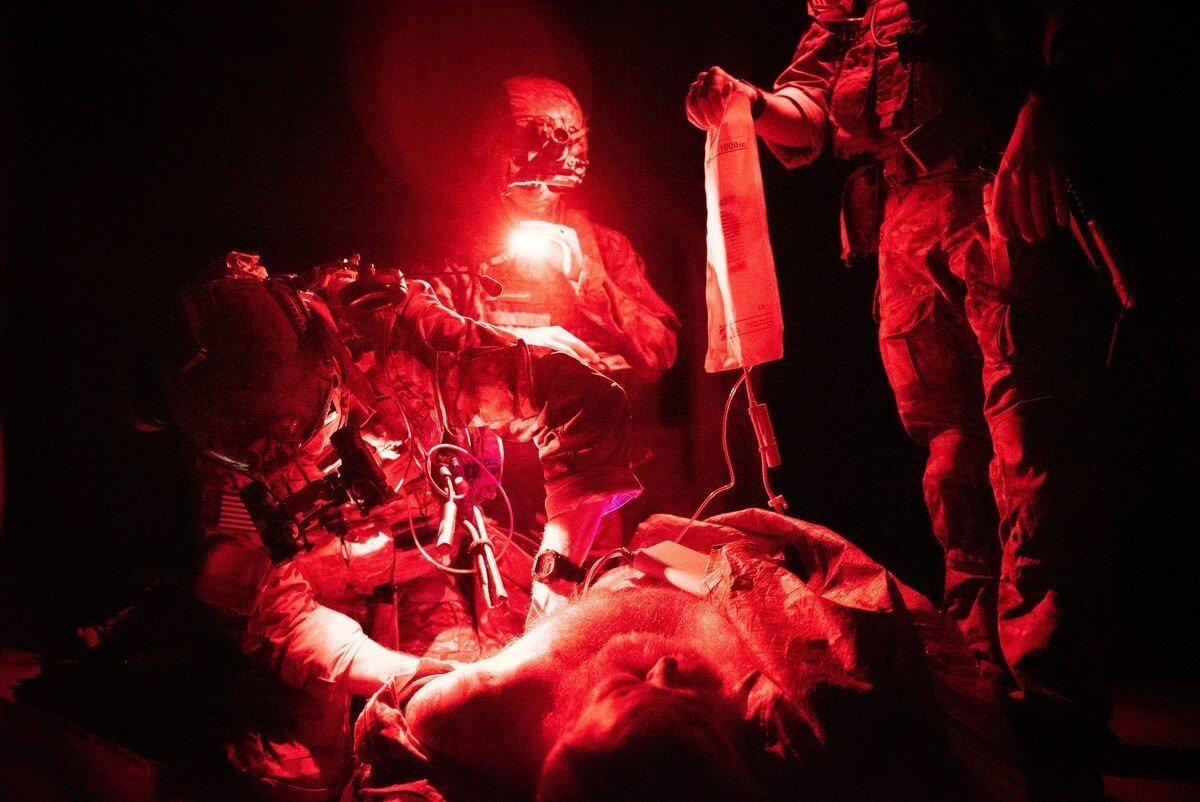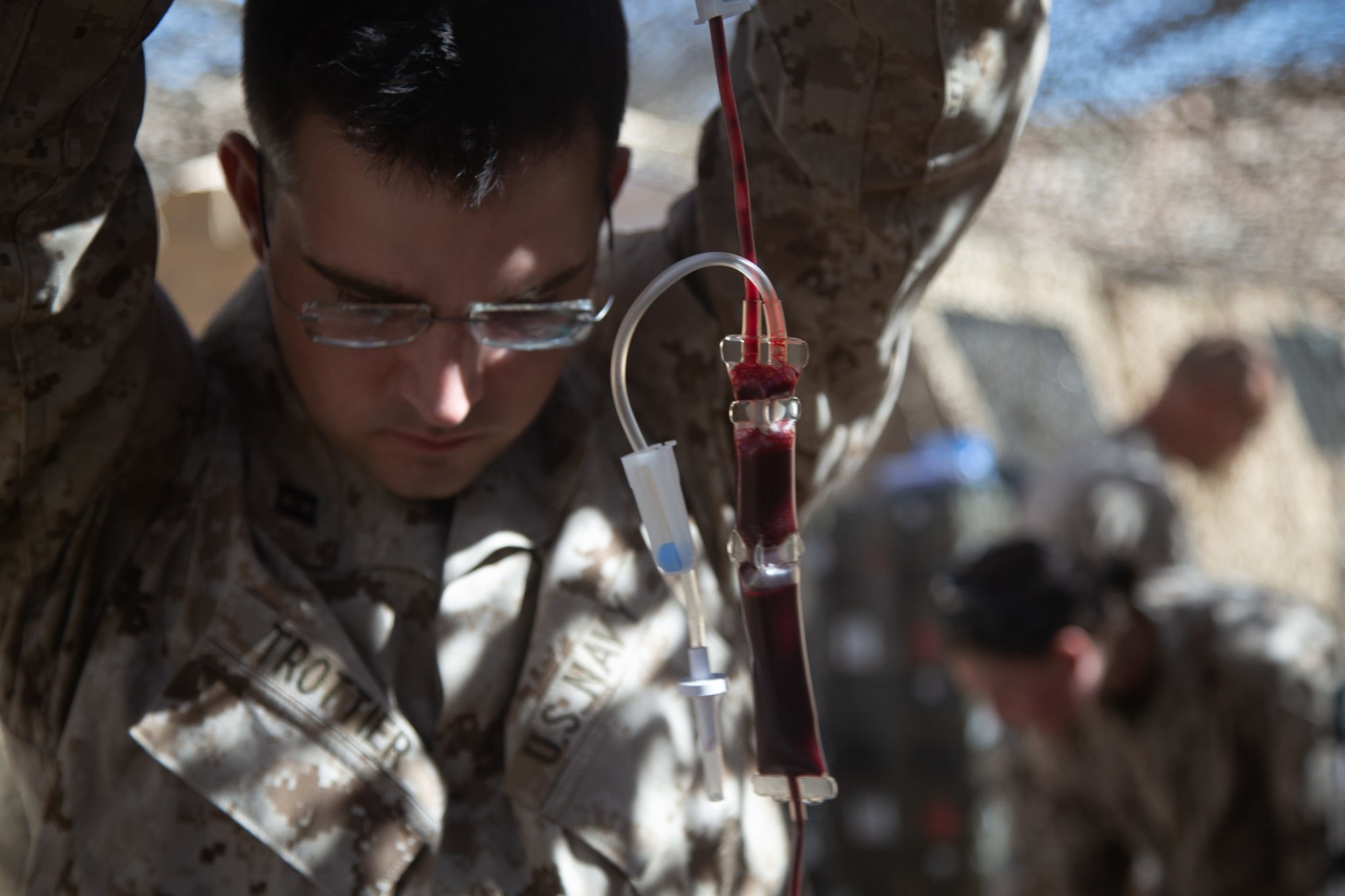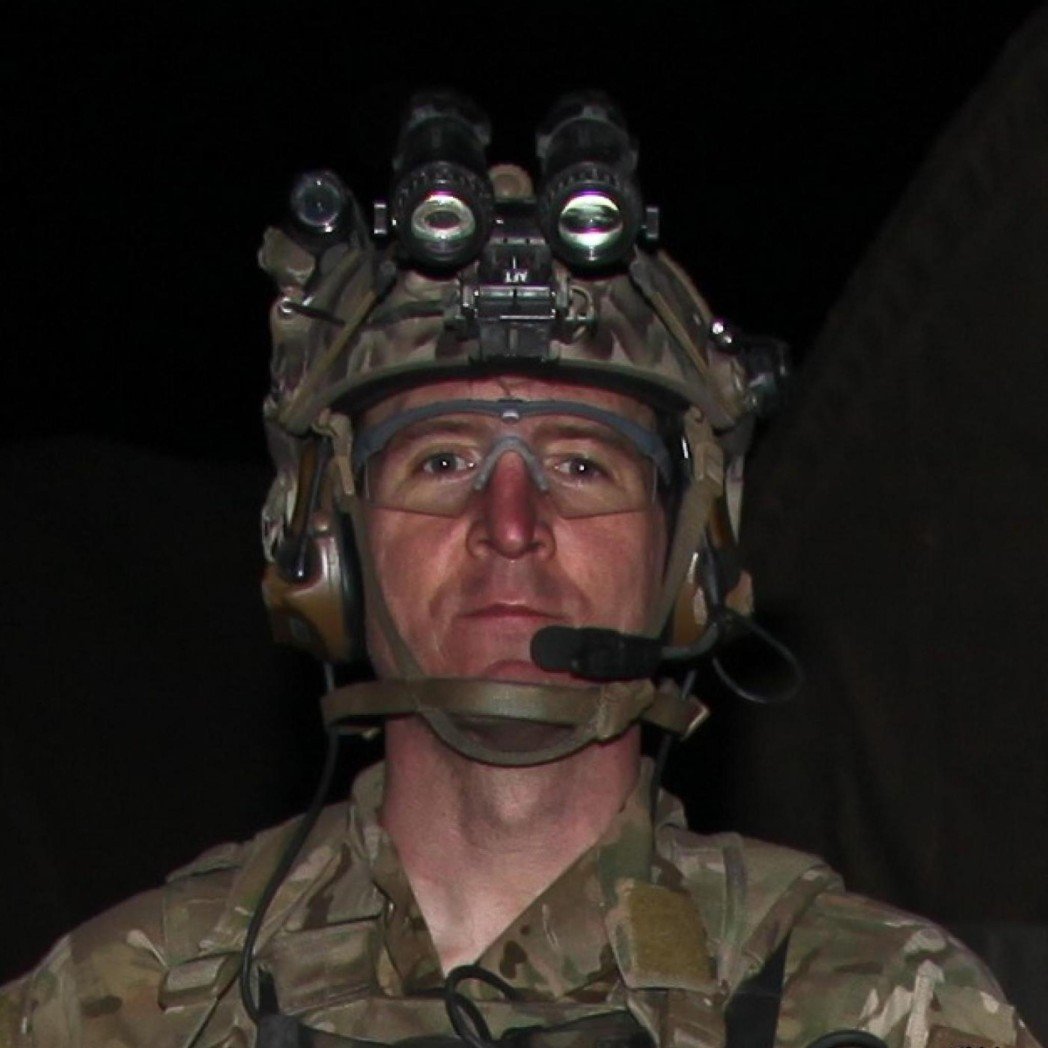Doc’s Corner: What’s Whole Blood Transfusion?

Army Ranger medics from 2nd Battalion, 75th Ranger Regiment, train in August 2019. US Army photo by Sgt. Jaerett Engeseth.
What would you rather have if you were wounded in combat and bleeding: a bag of water filled with electrolytes or blood? This may appear to be a stupid question, but it has become incredibly challenging to put the one proven resuscitation fluid into the hands of enlisted medical personnel.
In 2015, a more simplified approach to providing blood at the point of injury came to fruition. Updated from programs developed in World War II and the Korean War, the use of low titer group O whole blood (LTOWB) has become the standard for resuscitation in combat zones.
What makes the concept of LTOWB unique? Blood is a complex mixture of water, cells, proteins, and chemicals. However, the portion we care about the most is red blood cells (RBCs) and plasma. RBCs are identified with antigens as A and B, resulting in one of four types: A, B, AB, or O (no antigens). There are other identifying antigens like D (Rh factor), Kell, and others, but in combat, you are far more likely to die of hemorrhagic shock versus the possibility of a rare reaction.

Plasma carries the “opposite” of red blood cells’ antigens in the form of antibodies. For instance, people who have Type A blood will have B antibodies in their plasma. People who have Type O blood, with no antigens, will have both A and B antibodies in their plasma.
Group O RBCs are often given because, as stated, they lack any antigen that may cause a significant mismatch reaction. If we measure the level of A and B antibodies in a potential donor and they are low enough, we know that it will not cause a reaction in the patient if he or she is an A or B blood type. This makes group O donors very special on the battlefield and even here at home.
Fortunately, almost 50% of the US population have group O blood, and it is estimated that 50% to 75% of those are what the Department of Defense considers low titer, which is less than 1:256. The definition of “low titer” is not universal, and outside the DOD in the US, it can be defined from less than 1:50 up to 1:256.
LTOWB has the potential to drastically change the way we provide lifesaving care at the point of injury. We can draw it from a donor and transfuse it as fresh whole blood, or the medic can carry a unit in a cooler and transfuse it as cold-stored whole blood. If you have group O blood and would like to know if you are a universal donor, go to your local Armed Services Blood Program donation center to find out.
This article first appeared in the Summer 2021 edition of Coffee or Die’s print magazine.
Read Next:

Dr. Andrew D. Fisher is a graduate of Texas A&M University College of Medicine and is currently a general surgery resident at the University of New Mexico School of Medicine in Albuquerque, New Mexico. He served in the US Army as a physician assistant assigned to the 75th Ranger Regiment prior to medical school where he pioneered the use of whole-blood transfusions at the point of injury, and contributed to research for the utilization of low titer O-negative whole blood in trauma.
BRCC and Bad Moon Print Press team up for an exclusive, limited-edition T-shirt design!
BRCC partners with Team Room Design for an exclusive T-shirt release!
Thirty Seconds Out has partnered with BRCC for an exclusive shirt design invoking the God of Winter.
Lucas O'Hara of Grizzly Forge has teamed up with BRCC for a badass, exclusive Shirt Club T-shirt design featuring his most popular knife and tiomahawk.
Coffee or Die sits down with one of the graphic designers behind Black Rifle Coffee's signature look and vibe.
Biden will award the Medal of Honor to a Vietnam War Army helicopter pilot who risked his life to save a reconnaissance team from almost certain death.
Ever wonder how much Jack Mandaville would f*ck sh*t up if he went back in time? The American Revolution didn't even see him coming.
A nearly 200-year-old West Point time capsule that at first appeared to yield little more than dust contains hidden treasure, the US Military Academy said.












